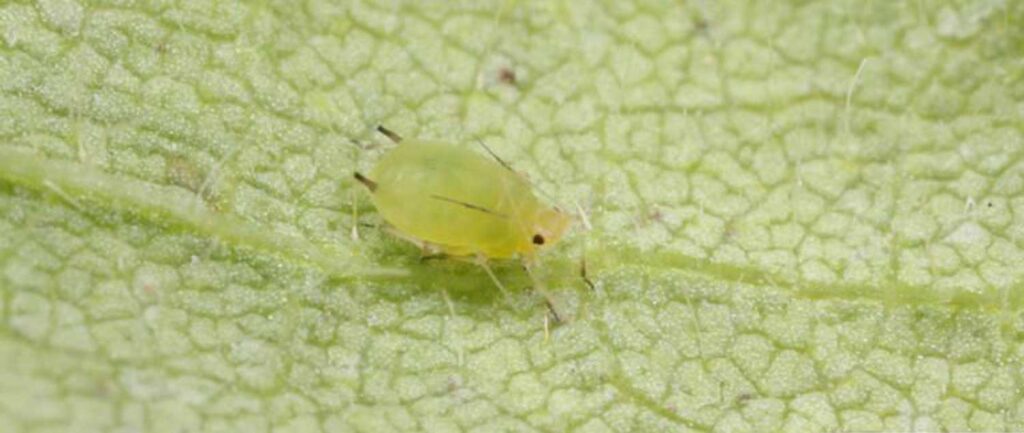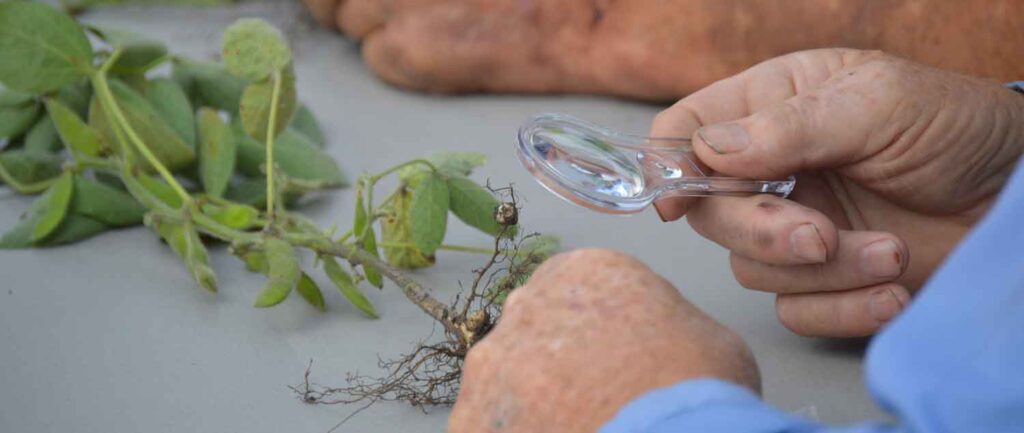We’ve previously discussed soil borne insects affecting soybeans.
These insects have two characteristics.
First, movement is limited, the seed is planted near the insects and the insects primarily are stand reducers. They also possess a “No-Rescue” status, meaning they must be managed at planting, usually with seed treatments, or before.
Another insect will attack the soybean as a stand reducer; however the black cutworm is far more mobile. The good news is rescue treatments are available if scouting reveals an issue exists.
Multiple cutworms exist, but black cutworms tend to be the most problematic. Black cutworm moths overwinter in the southern Great Plains (Texas and Mexico), and appear in the Minnesota from April through June.
Adults are large, grey-brown, heavy-bodied moths with 1 to 2 inch wingspan. Small, black zigzag markings extend the length of each forewing, while the hind wings are off–white in color with tan borders. Moths lay small, round and white eggs; eventually turning brown – either singly or in clusters – on low-growing, dense vegetation. Larvae, 0.2–1.5 inches in length, with color varying from greasy gray to black. A broad light gray band runs down the middle of the back with unequally sized, paired tubercles run along the upper side of the body. Seldom seen pupae are dark brown about 3/4 inch long.
The moths are attracted to early spring vegetation, such as winter annual weeds and possibly cover crops, where mating and following egg lay takes place. These moths are largely active at night and prefer to deposit their eggs. Cutworm issues are minimized with fall plowing and have been found to increase with the use of minimum tillage. Risk for infestation by black cutworm is greater in areas with crop debris, weeds and/or the low areas within fields. Fields adjacent to areas of permanent vegetation, such as pastures or buffers, are also potential trouble spots.
Scouting for black cutworm damage should start at VE (crop emergence) and continue until plants are past V5 (fifth trifoliate). While scouting, watch for signs of leaf feeding, cut and/or wilted plants. When these signs are present, you should search for larvae.
Scout the area by examining the soil around the base of the plant or under nearby field debris. Check five different areas of the field checking at least 20 consecutive, in row, plants to determine percent of plants cut or girdled. To be effective, concentrate sampling in areas that are more at greatest risk for infestation (high weed/debris and/or low areas).
Treatment thresholds for seedling plants are reached if cutworms are present, if 20 percent of plants are cut or if one foot-stand gaps are found in several areas of the field. As the crop reaches vegetation stage and before reproduction (flowering), treat when cutworm defoliation reaches 30 percent.
Growers would be wise to visit the Cutworm Network weekly before planting, and continue through the season. Using pheromone traps, Bruce Potter leads a team monitoring adult moth catch each year in southern Minnesota. When standards are met (a biofix of 8+ moths in a 2 night period), degree days can then be calculated to estimate when larvae will be present in your fields. Current (5/24) information indicates Brown, Redwood and Rock counties have the highest probability of black cutworm infestation. This probability changes with environmental conditions, so monitor the web page weekly.
Information sources:
http://www.extension.umn.edu/agriculture/soybean/pest/black-cutworm/
https://extension.entm.purdue.edu/fieldcropsipm/insects/black-cutworms.php
https://swroc.cfans.umn.edu/bcw-2017-07
David Kee is the director of research at Minnesota Soybean and can be reached at 507-399-1635 or david@mnsoybean.com







